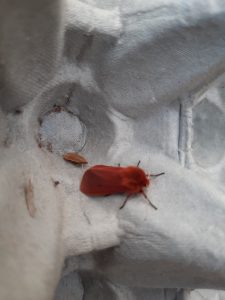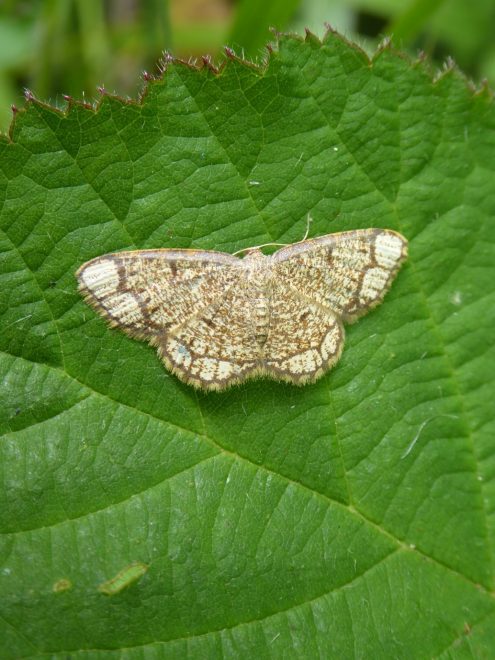Rare moth species is recorded in South Downs National Park
September 9, 2024

Ranger Angela Ward writes about a recent community event that uncovered one of the rarest insect species in the UK.
As part of this year’s Graffham Down Trust annual picnic and butterfly walk, Michael Blencowe, Fiona Scully (from Butterfly Conservation) and I set up two moth light traps in Bowley’s Field. The warm, overcast conditions overnight were perfect for attracting moths to the traps.
But at 4:45am the following morning Michael stood over the traps at the first light of day, completely overwhelmed by the number of moths that had been attracted to the mercury vapour bulbs. There were hundreds of them. Fiona and I joined him as they carefully collected the moths in pots, noting down each species’ name in preparation for the picnic.
This whole process took a few hours and, by the end, there was a list of over 100 moth species – a really good haul. Amongst them were some of our most impressive moths. The Privet hawk-moth (Britain’s biggest moth), the pink elephant-hawkmoth, the shining burnished brass, the stick-mimic buff-tip and the gorgeous leopard moth.
 There were also ruby tigers (pictured left), rosy footmen, festoons, purple thorns, July highflyers, coronets, snouts and spectacles. Graffham Down is one of the best places in Sussex for moths and many rarities have been found here. Michael was excited to record some nationally rare species such as olive crescent, scallop shell, plain golden-Y, Anania verbascalis and the beautiful Palpita vitrealis.
There were also ruby tigers (pictured left), rosy footmen, festoons, purple thorns, July highflyers, coronets, snouts and spectacles. Graffham Down is one of the best places in Sussex for moths and many rarities have been found here. Michael was excited to record some nationally rare species such as olive crescent, scallop shell, plain golden-Y, Anania verbascalis and the beautiful Palpita vitrealis.
But Michael was amazed at what was waiting under the last eggbox – a ringed border. This is a mega-rarity which has never been seen in West Sussex before and was only the fourth ever record for Sussex.
It’s fantastic that Graffham Down is home to so many rare species and the diversity of moths in the moth traps is a reflection of the wide variety of habitats that can be found on this very special reserve.

